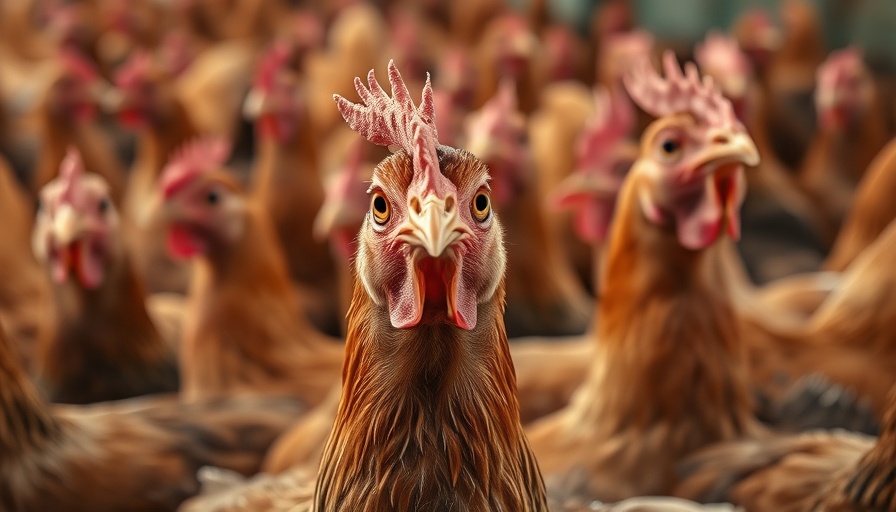
Unpacking the Looming Threat of Bird Flu
The recent surge of highly pathogenic avian influenza (H5N1) in the United States, impacting approximately 20 million birds in January 2025 alone, has reignited fears about a potential pandemic. As public health concerns rise, understanding the history, dangers, and preventative measures surrounding bird flu becomes crucial for our collective safety.
The Historical Context of Avian Flu
Bird flu is not a new phenomenon; its roots trace back to earlier pandemics. Notably, the deadly 1918 influenza pandemic, caused by the H1N1 virus, generated an unprecedented death toll. Historical data suggests that farm animals, including birds, played a pivotal role in the spread of viruses to humans. Understanding these historical connections lays the groundwork for addressing the current threats posed by H5N1.
Bird Flu vs. Seasonal Flu: What Sets H5N1 Apart?
While seasonal influenza generally has a mortality rate below 5%, the H5N1 strain presents a staggering mortality rate of approximately 50% among known human cases, comparable to dangerous viruses like Ebola. This shocking difference signifies a crucial distinction in how public health organizations prepare for and respond to potential outbreaks.
Expert Insights on Future Risks
According to health experts, the genetic makeup of H5N1 raises alarms. The virus possesses the potential to undergo mutations that would enable it to spread efficiently among humans. Such a shift could lead to catastrophic scenarios; some scientists predict that H5N1 could claim the lives of a billion people globally if left unchecked. As health officials work tirelessly to monitor outbreaks, community awareness and preventive measures are more critical than ever.
Preventive Measures: What Can We Do?
Being proactive about our health and understanding the risks associated with bird flu allows for better preparedness. Strategies include enhanced biosecurity in poultry farming, vaccination programs for domestic birds, and public education on recognizing symptoms. Staying informed and advocating for preventative steps can greatly contribute to community well-being.
Feeling Empowered in the Face of a Global Threat
As we navigate through these uncertain times, it’s vital to recognize our role in public health. By staying informed, supporting local farmers who adhere to safety protocols, and advocating for responsible health policies, we can help mitigate the risks posed by avian influenza and safeguard our communities.
 Add Row
Add Row  Add
Add 




Write A Comment